Why you should never buy a cheap laminated motorcycle jacket
Published on: 03 October 2023
First, let’s go back to fundamentals. There are three forms of construction for a waterproof, motorcycle garment; be it a jacket or a pant.
The first is a ‘removable’, waterproof membrane. Contrary to the understanding of many, this is not what constitutes a ‘drop-liner’ garment. A jacket that has a removable, waterproof lining is useful if you want to ride in hot weather. Taking the lining out means that your body can sweat effectively in order to keep cool. The cooler, oncoming air will also be able to reach the body more easily, to the same end. The downside of garments with removable waterproof liners is that they don’t always work particularly well in heavy rain.

The most common form of construction in a motorcycle garment is the ‘drop-liner’ membrane. It’s what 90% of waterproof garments are equipped with. The construction is simple and reliable. In a jacket, the membrane is sewn in to, and hangs down from, the shoulders. And this form of construction works; you will always stay dry in a drop-liner jacket, although after four hours or more in the rain, water may well pass through the outer chassis. It won’t pass through the membrane to reach the body, but the water swilling about between the outer fabric and the membrane can make you feel both cold and wet, even if you’re actually still bone dry!
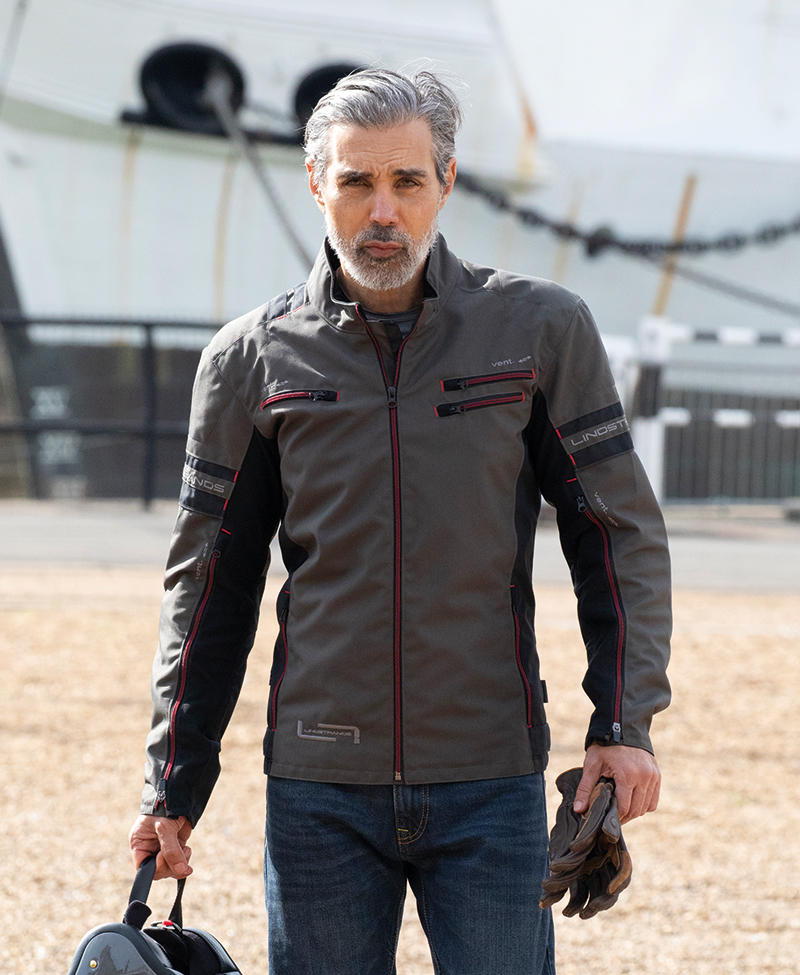
Regarded by some as the technically superior form of construction is ‘lamination’. In a laminated garment, the membrane is bonded to the inside surface of the outer chassis of the garment. The membrane itself is, in essence, the same membrane that you would get with a drop-liner garment. But the benefit is that the rain cannot pass through the outer chassis of the garment, because the membrane is backed on to it. So the garment itself won’t ever get soaking wet. And as the jacket won’t absorb much rain the wearer will feel less cold. When the rain stops, a laminated garment will also dry out much faster.
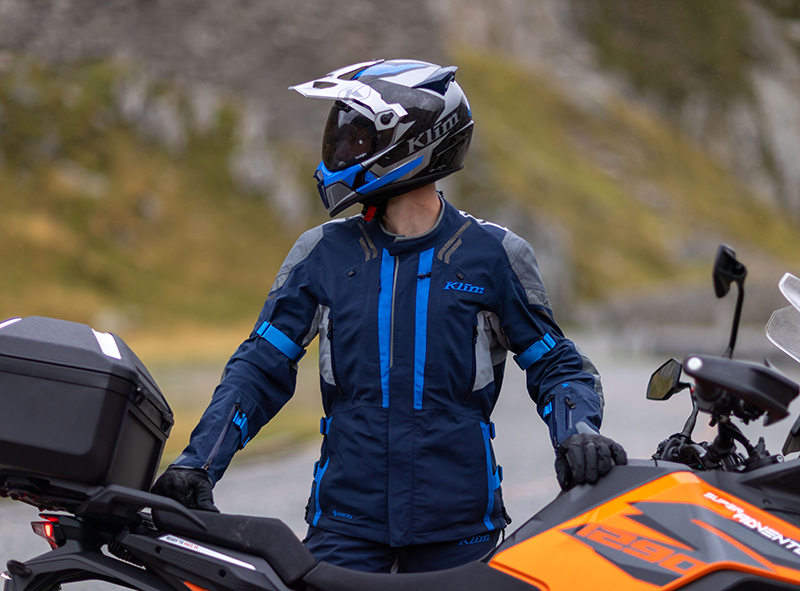
If this is the case, you might ask, why doesn’t everybody wear laminated motorcycle gear? It’s a good question; and it is one that we’re going to try and answer here.
First, laminated jackets are less comfortable. When you laminate a membrane to the chassis of the jacket, the material becomes stiffer. And so laminated jackets don’t mould to the body, and are not as nice to ride in, or to walk around in. Second, they are not as warm. And that’s because, with a laminated jacket you lose the insulating air gap between the outer chassis and the membrane that you get with a drop-liner jacket. Thirdly, on a pari-pasu basis, they are more expensive; and that’s because they are much more complicated to manufacture. And lastly, they are more prone to failure. And that’s the main crux of what we are going to be talking about in this review.
The premiss of this treatise is that one should avoid buying cheap, laminated, motorcycle gear.
In fact, we are of the view that most motorcyclists will be much better off with drop-liner garments. And that’s for the reasons we have already touched upon. Drop-liner outfits are more comfortable, warmer, less expensive and more reliable. And the truth is that few of us actually ride in conditions where the benefits of a laminated garment come into play.
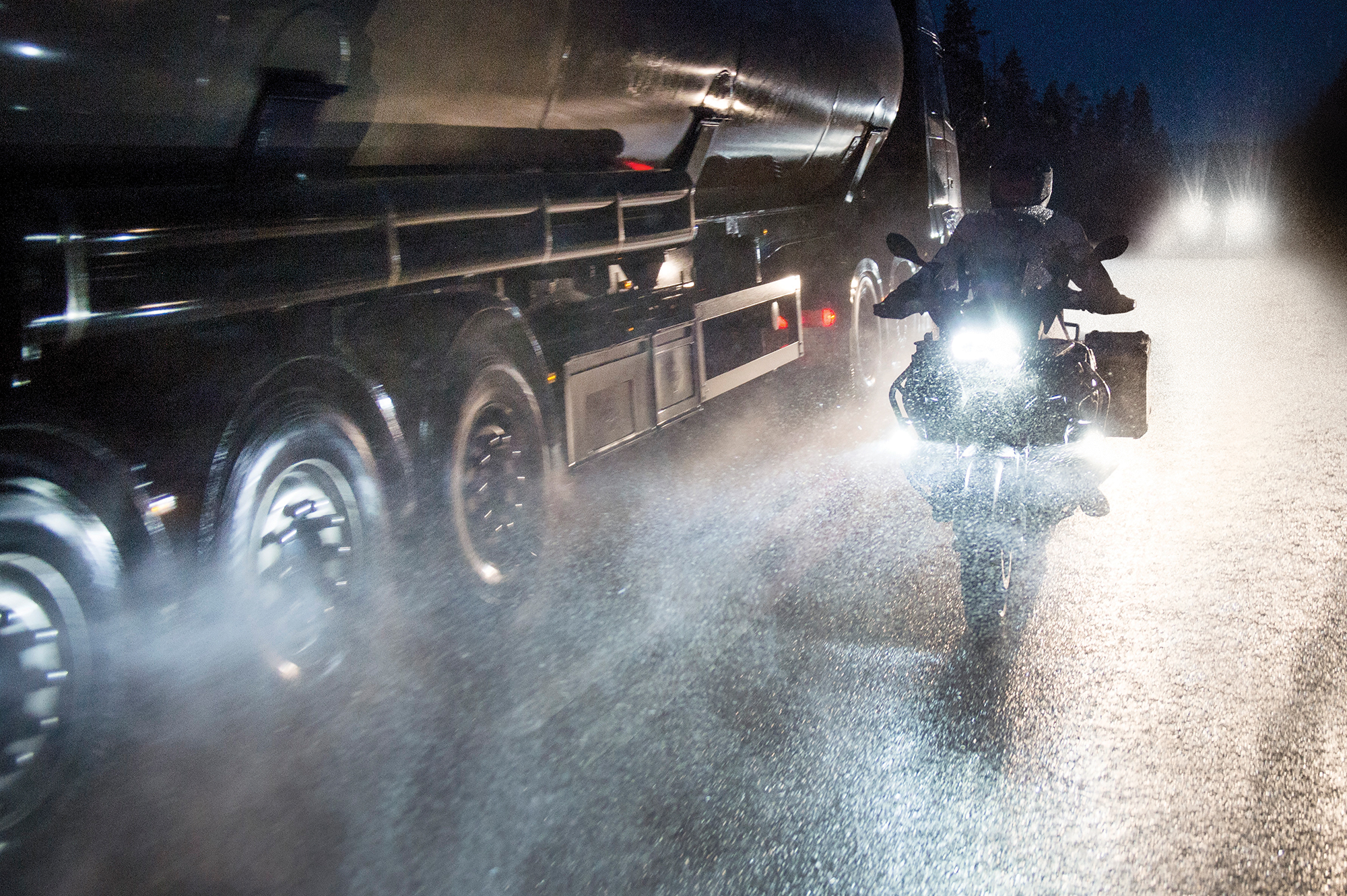
We concede that if you frequently find yourself riding for four hours or more in heavy rain, a laminated suit might bring benefits. But actually very few of us do. It simply doesn’t rain every day. Even here in Britain! At the weekend, many of us look out of the window. If it’s raining hard, we draw the curtains, and put on the kettle. You may have less choice, of course, if you’re on tour somewhere, but you won’t often find yourself in such a position; and if you do, donning an inexpensive waterproof over a drop-liner jacket or pant will provide a solution that is better than a laminated garment.

The guy who commutes for over an hour each way through the winter may also benefit from a laminated suit. If it rains heavily on the way into work, a drop-liner jacket won’t have reached the stage that we call ‘wet out’, but it will be wet. And because it’s taken on a lot of rain it won’t necessarily be dry by the time it comes to go home. And that’s not nice on a cold November’s evening. This having been said, the aforementioned waterproof, costing not a lot, would once again eradicate the problem.
And so, even though we acknowledge, and can even advocate, the benefits of laminated gear, we simply do not think that it’s the best solution for most motorcyclists.
Let us draw an analogy.
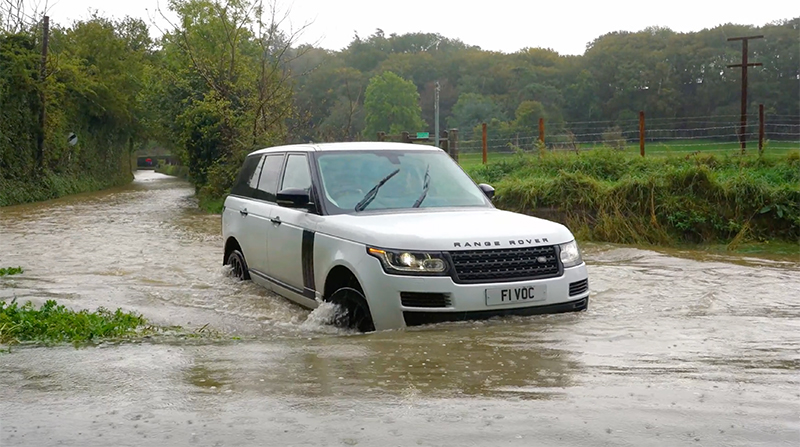
A laminated jacket is a 4x4 vehicle. In certain circumstances a 4X4 can come in handy. In some, albeit rare, circumstances, it might be deemed invaluable. But most people simply don’t need a 4x4. If you can afford one, and if you simply want one, go for it. But for most people a 4x4 has little benefit. It will be more expensive, both to buy and run. For most of us a two wheel drive car, just like a drop-liner jacket, will be more than up to the job.
Until relatively recently, laminated garments were exorbitantly expensive; and this tended to put them out of the reach of most motorcyclists.
It was Gore who developed the membranes, production methods and technology that allowed laminated gear to work. And it was Rukka, and back in the day Hein Gericke, who persevered in their attempts to make laminated gear work sufficiently well to be taken seriously by motorcyclists.
In the early days, laminated clothing was far from perfect. The gear didn’t always keep riders dry. Sometimes it was so stiff and uncomfortable that nobody wanted to wear it. But over time laminated gear became better, more reliable and more wearable.
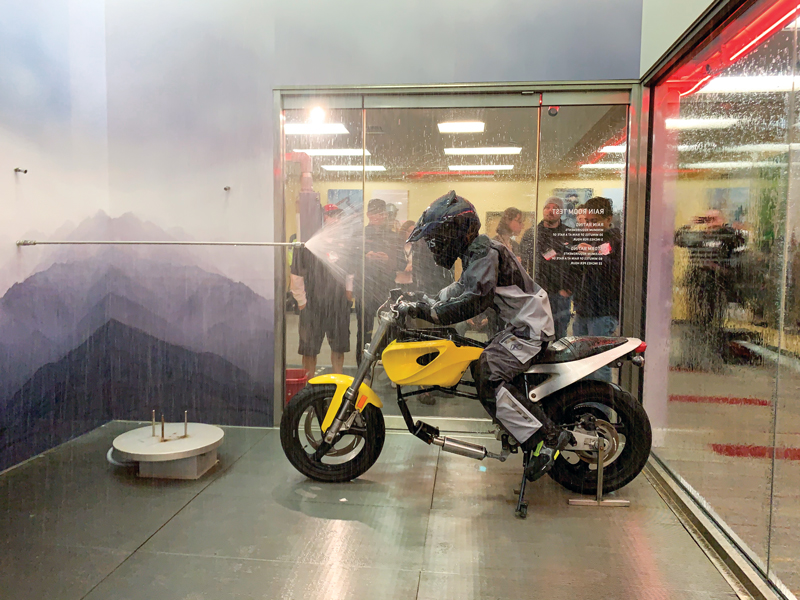
But always at the forefront of developments was Gore with its various Gore-Tex membranes. And at the top of the tree is what became known as the GTX 3-layer Pro Shell construction. An outer Cordura, laminated to a membrane that was, in turn, laminated to a third layer that protected the inner side of the membrane. It was, and still is, the last word in waterproofing, breathability and reliability. And even though Gore also offers slightly simpler two-layer laminated membranes, it always was, and still is, more expensive to make a garment using Gore-Tex’s laminated membranes.
Over time, other manufacturers started to perceive the marketing benefits of offering laminated membranes, but they weren’t up for selling products at the kinds of prices being asked by the brands that used Gore-Tex. And so they sought ways to offer less expensive laminated gear.
Now because they sought cheaper solutions, these brands had to, out of necessity, cut corners. Cheaper membranes that didn’t breathe as well. And membranes that weren’t as waterproof or robust, perhaps. But the main savings were to be had by using inferior tape, and by using much less of it. And the taping is the single most important consideration when it comes to the making of a totally reliable laminated jacket.
With a jacket with a removable liner there is virtually no taping involved. The membrane is attached to the jacket by means of a zip. But in heavy rain, the water that soaks the outer fabric can pass through to the zip to reach the body. And that’s why this is the least waterproof of the three types of construction.
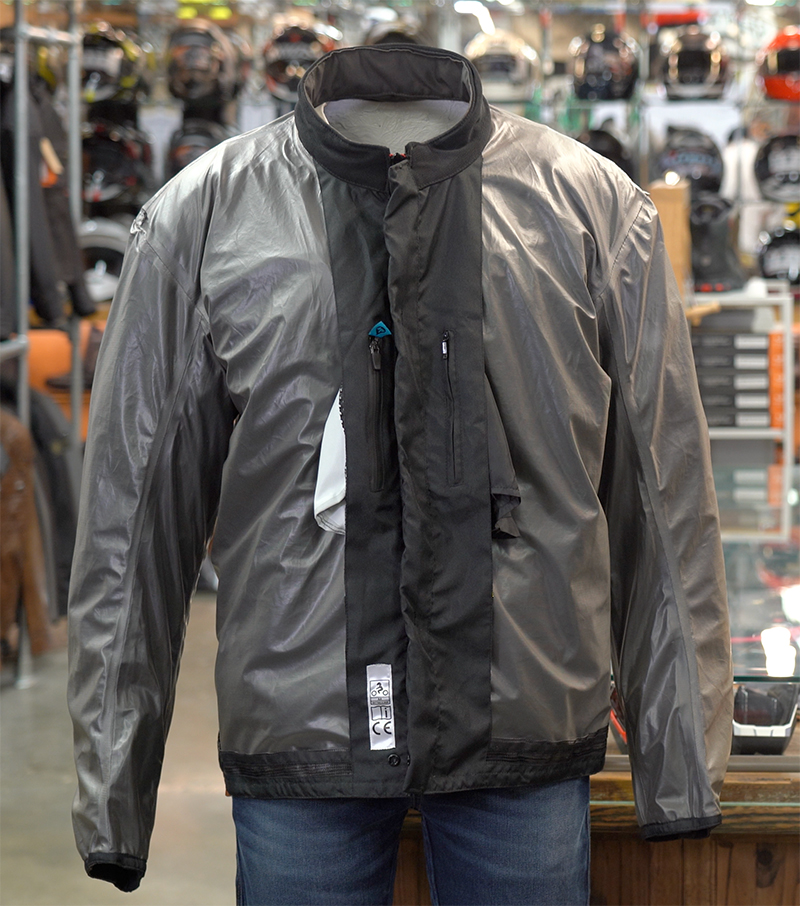
There is some taping in a drop-liner garment, but it is fairly minimal, and quite simple to apply. You simply tape the membrane where it is sewn into the jacket, and you seal the membrane where the waterproof panels are joined together, such as in the sleeves. It is not a complex procedure. The machinists who put such garments together do not need to be particularly skilled. And sealing a drop-liner membrane doesn’t take a huge amount of time.
Which is why a drop-liner jacket (or pant) can be as cheap as chips, and still work!
But that’s not the case with laminated garments. In a laminated garment the membrane is heat sealed to the outer fabric, but wherever there are joins in the panels that make up the outer fabric of the jacket the membrane on the inside has to be properly sealed with tape.
Now in a high-end laminated garment, we can be talking about 50 or more separate panels. Every join has to be sealed accurately, and without any possibility of leaking. And that’s because, if there’s any unsealed gap between the panels, the rain will find its way in straight through to the body.
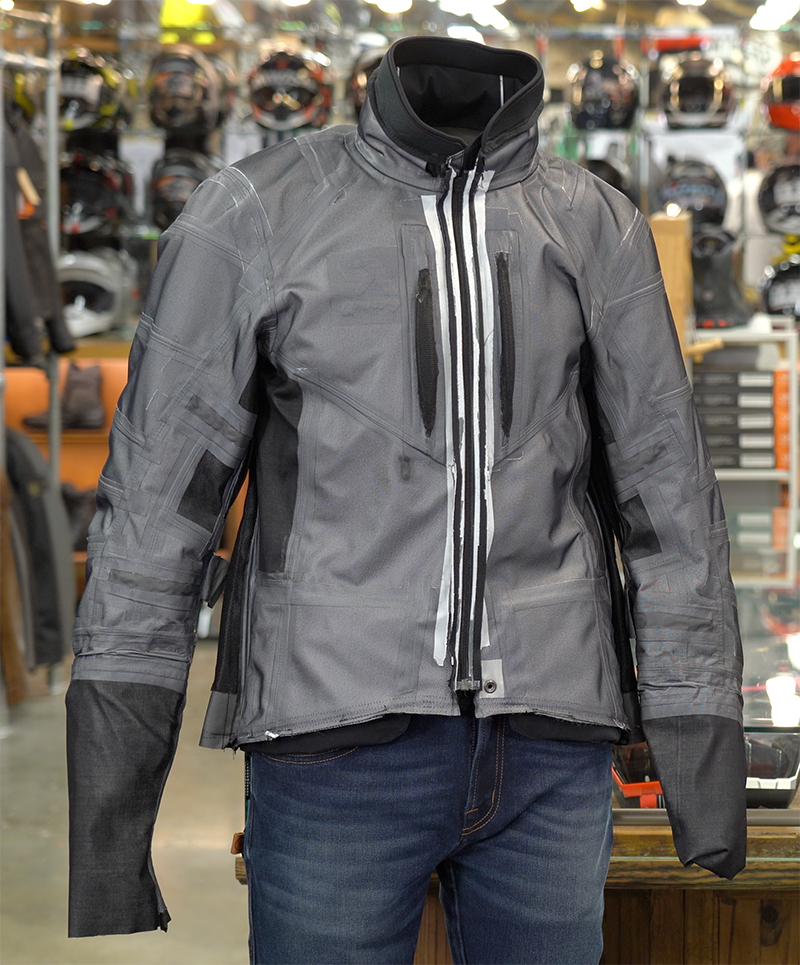
Let’s look, for example, at the Rukka jacket above that has been turned inside out. You can see the intricate nature of the interconnecting panels; and just how much tape is used to make water ingress impossible.
And, of course, it is Gore that dictates how this is done. Gore stands for waterproofing. They have a brand to protect. And they offer a lifetime guarantee to keep you dry with all their garments. So they simply will not allow corners to be cut.
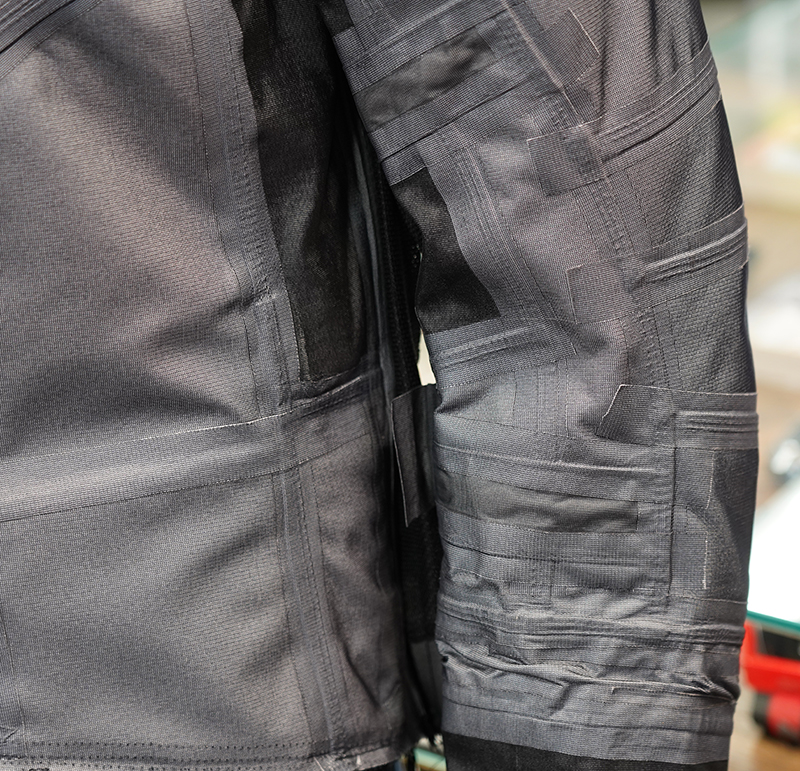
Rukka didn’t want to give their trade secrets away to us, but Stadler also use a Gore-Tex ProShell construction and maintain similar standards. And Mr. Stadler was prepared to tell us that the making of one of his jackets would take a skilled operator between seven and eight hours to put together. The sealing of the seams and joins in the membrane of a single jacket could take up to an hour, and consume nearly 30 metres of tape. All the work has to be done by hand by skilled and trained individuals.
Mr. Stadler’s point to me, and it is totally correct, is that you simply cannot afford to put this kind of input into a jacket if you are selling it for £250, which is the price some laminated jackets sell for.
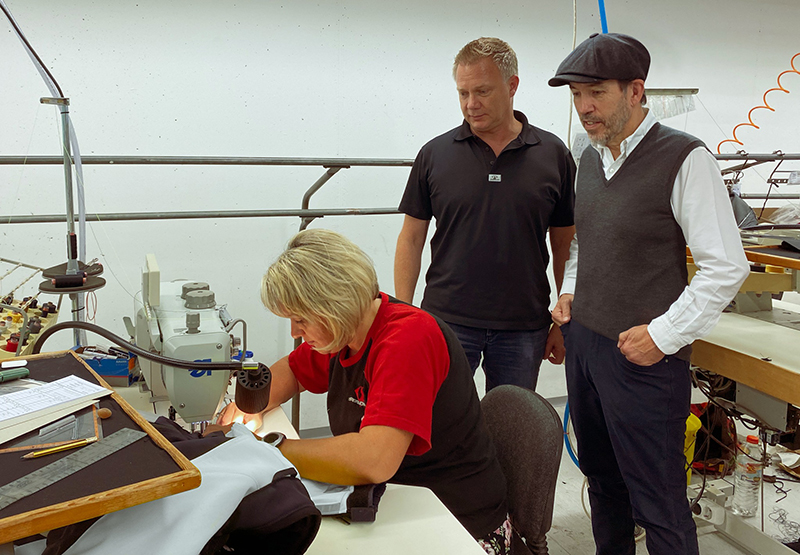
Let us look at the costs in a bit more detail.
If a jacket sells in a shop for £250, £42 can be deducted for VAT, as that goes direct to the Chancellor. The retailer will have paid c.£125 for that jacket. The UK distributor will have paid the manufacturer c.£90. The manufacturer will have paid the factory in China, or wherever, about £60 for the jacket. The factory will be wanting to make a profit on the jackets it produces, so one would expect the entire cost of the jacket to the manufacturer to be in the region of £45. Out of that £45, has to come the cost of all the fabrics and materials, the laminated membranes, the poppers, the zips, a thermal liner perhaps, elbow and shoulder armour, and of course the cost of the labour involved in putting the jacket together.
Now we accept that the costs in the factories where these garments are made are not the same as they are here in Europe, but if the total cost for making a jacket is £45 including all the labour and materials, then you don’t have to be a rocket scientist to realise that nobody is spending an hour applying 30 metres of tape to the seams of the jacket.
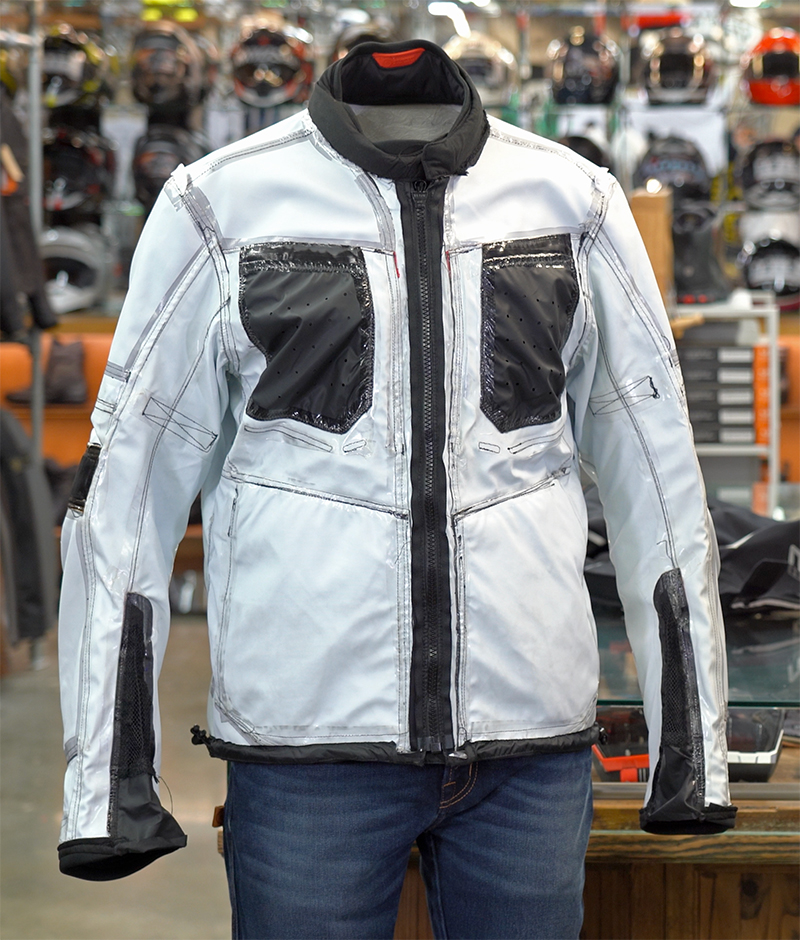
And I think that this is demonstrated by the ‘budget’, laminated jacket shown above. The tape itself is the cheapest. There’s is not a lot of it. And it looks more like sellotape than the kind of fully waterproof tape specified by Gore. And there is little if any ‘double-layering’ of the seams where the various panels are joined together. Frankly, this is a jacket that is simply waiting to spring a leak. If you don’t get caught in heavy rain you might be okay. You might even get through the one-year warranty period. But when a laminated jacket is constructed like this, it’s only a matter of time. A jacket like this is not a long term proposition.
Our position at Motolegends remains the same as it has always been.
We do not think that laminated gear offers the best solution for most bikers. Most of us will be better off in drop-liner gear. It will offer better value, it will be more comfortable, it will be warmer, it will be more reliable, and it will be more than sufficiently waterproof. For those very rare occasions where it’s not, a relatively inexpensive waterproof will offer a solution that is better than lamination.
Of course, you may be the rider who really does need laminate gear. And for some, it has to be admitted, laminate is not only a way to go, but sometimes the only way to go. If it is, however, you may just need to bite the bullet, and pay up for the proper stuff. And that’s because, as we have seen, not all laminated clothing is born equal. Buy a cheap laminated suit, and there’s a good chance you’ll need another one down the road. What is it they say? Buy cheap, buy twice; and nowhere does this apply more than it does to laminated gear.
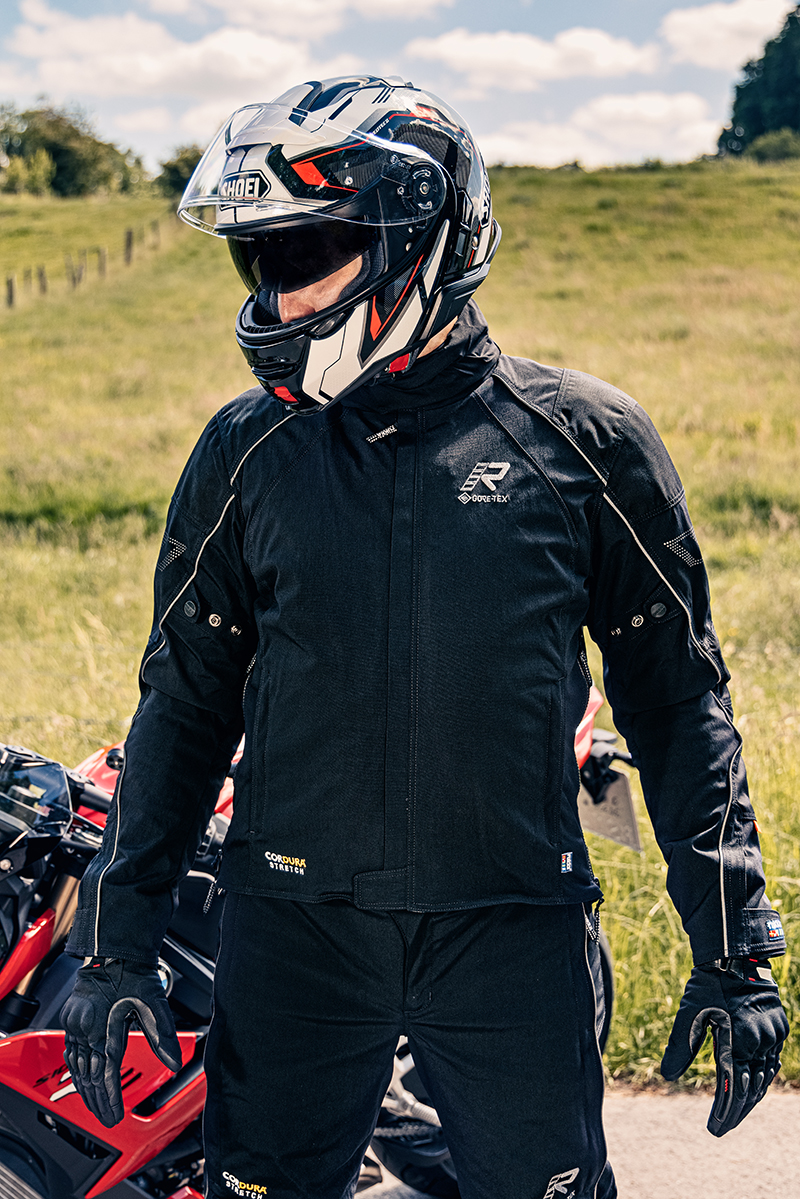
Me personally? If I wanted the best solution, I’d go for a high-end Gore-Tex drop-liner outfit such as the Rukka Comfo-R, and carry a set of Scott waterproofs in my panniers. The way I see it, this would give you the best of both worlds!
But, frankly, if you really feel you need a laminated outfit, and if you really want to be sure that it’s going to work all the time, and for years to come, then you’ve probably got to stump up, and go Gore-Tex.
Gore-Tex outfits are not the cheapest, but Gore knows more about making laminated garments than all the other manufacturers combined. And Gore is the only supplier that oversees the production of garments that use its membranes. A manufacturer cannot buy Gore-Tex membranes by the meter, as you can with any of the others. Gore-Tex is not just a company that supplies membranes. When you work with Gore, you enter into a partnership. And Gore ensures that your gear works.
Gore’s membranes are objectively the best on a wide array of measures, but there is one criterion that sets the company apart from any other. Gore is the only membrane manufacturer that guarantees its membranes. And what’s more it guarantees them for life.

Now we have always viewed what Gore calls its ‘Guaranteed to Keep you Dry’ pledge as an exercise in marketing spin. After all, surely any membrane will do its job if it is not damaged? And if a membrane is damaged, Gore would cry ‘wear and tear’, we reasoned.
But we have now come across a sufficient number of instances to suggest that Gore’s guarantee has real teeth. Many of the clothing brands have told us how Gore has bought garments off them to replace customers’ outfits that were found to be leaking.
Only a month before we wrote this blog, we had another case of the Gore guarantee in action.
A gentleman came to see us about his seven year old Rukka Armaxion jacket that was apparently letting water in. It was well out of warranty, so there was little we could do. But wanting to help, we suggested he contact Gore directly. Unfortunately, retailers are excluded from the scheme, so we gave the gentleman Gore’s number. 00800 2314 4000. We wished him ‘bonne chance’.
Some two weeks later, he wrote to us, delighted by the news that Gore had sent him a cheque for £640. Now, that’s not enough for a top-of-the-range Rukka jacket these days, but I suppose that there had to be a consideration for the fact that the gentleman had already had seven years’ service out of the jacket. And given this a cheque for £640 seemed like a result. Certainly the customer thought so.
And so, the way we see it, Gore’s ‘Guaranteed to keep you dry’ pledge provides yet another reason to go with Gore-Tex if you really are intent on going laminated.
Share this story
































































